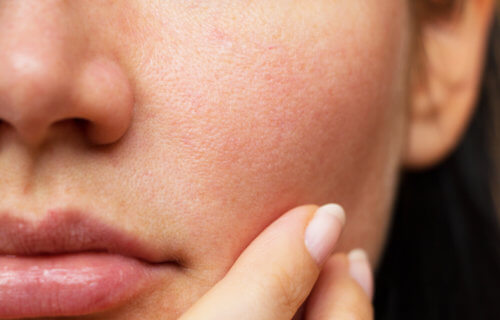BABRAHAM, United Kingdom — A breakthrough de-aging technique is capable of turning back the clock of human skin cells by three decades, a new study reveals. Scientists at the Babraham Institute say the procedure rejuvenates skin cells by resetting them to an earlier stage of development.
Study authors believe this technique may one day lead to treatments which rejuvenate all types of cells, reversing the aging process and repairing damaged or diseased cells.
Giving skin cells a ‘time jump’
The team says their innovative approach partially de-ages cells without causing them to lose their specialized function. This is an important distinction in regenerative medicine.
When scientists create “induced” stem cells, the multi-step process erases the markers which make cells specialized. For example, if scientists are looking to reprogram a human skin cell, they would reset the cell back to a point where it was an unspecialized stem cell — like in a fetus.
The new technique, however, overcomes this problem by stopping the reprogramming process before it completely erases the identity of the cell. This allowed researchers to find the right balance between reprogramming the skin cells and making them biologically younger. This also allows the cells to retain their function as a skin cell, while regaining their vitality from decades ago.
The work builds on Shinya Yamanaka’s 2007 breakthrough, when the scientist became the first person to turn a normal cell into a stem cell — which can develop into any kind of cell. The process of fully reprogramming a cell takes 50 days and uses four key molecules which scientists now call Yamanaka factors.
The new technique only goes through this process for 13 days. In doing so, it halts the process before skin cells forget how to act like “normal” skin cells. However, the partial reprogramming allows them to regain their ability to function like younger, healthier cells.

Taking 30 years off your skin
To find out how youthful the procedure made cells, researchers first examined each cell’s epigenetic clock, which shows age through chemical tags along a person’s genome. They then examined the transcriptome, the gene readouts coming from a human cell. The results show that skin cells were 30 years younger in comparison to untreated cells in the experiment.
“Our understanding of aging on a molecular level has progressed over the last decade, giving rise to techniques that allow researchers to measure age-related biological changes in human cells. We were able to apply this to our experiment to determine the extent of reprogramming our new method achieved,” says Dr. Diljeet Gill in a university release.
Moreover, the team found that the treated cells were not only younger in appearance, they acted like younger cells as well. The treated skin cells (fibroblasts) were able to produce more collagen, a molecule in the bones, skin tendons, and ligaments which provides structure for the tissues and heals wounds.
When scientists simulated a cut in the cell culture, the reprogrammed fibroblasts moved more quickly to repair the damaged area. The team believes this is a promising sign that the new technique could help create a way to better treat wounds and also treat age-related disease — like Alzheimer’s.
“Our results represent a big step forward in our understanding of cell reprogramming. We have proved that cells can be rejuvenated without losing their function and that rejuvenation looks to restore some function to old cells. The fact that we also saw a reverse of ageing indicators in genes associated with diseases is particularly promising for the future of this work,” Diljeet concludes.
The study is published in the journal eLife.
